If we didn’t have one and just published and prayed, you probably wouldn’t be reading this now.
Nobody would.
Sounds like a familiar problem?
Keep reading to learn how to create a winning content distribution strategy in 10 minutes.
But first, let’s make sure we’re on the same page…
Content distribution is the process of getting your thoughts and ideas in front of potential customers. You do this by publishing and promoting them in various formats across multiple channels.
For example, I recently had some thoughts about Google and AI content—which I published on our blog:

We then distributed this post to the 200K+ subscribers of our SEO newsletter, Ahrefs Digest…

… our 141,172 followers on LinkedIn:
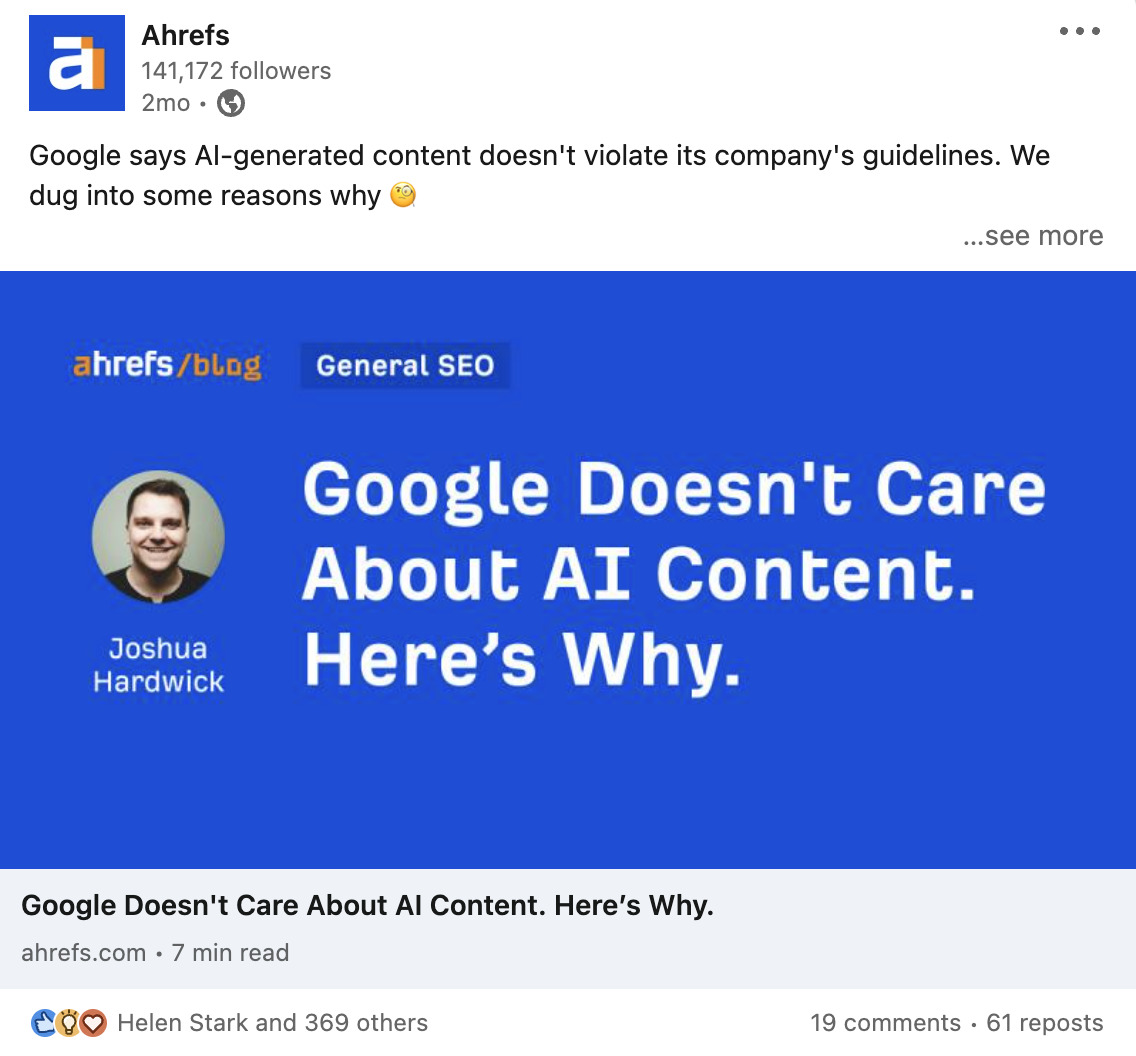
… and I even turned the post into a Twitter thread (which got a fair bit of attention).
Result? Eyeballs-a-plenty.
But I know what you’re thinking…
If your content is truly amazing, people will find it, share it, and it’ll be going viral in no time, right?
Sorry, but… no.
People aren’t just sitting around refreshing your blog homepage waiting for you to publish something new. They’re hanging out on TikTok, Reddit, Instagram, LinkedIn—y’know, the places with algorithms designed to surface content they actually care about.
If you want potential customers to actually find and consume your content, you need to distribute it in those places.
Don’t wait for people to come to you. Go to them.
People consume content in so many places that marketers have done their usual trick of grouping them into buckets.
Let’s discuss the three main ones.
Owned channels
Owned channels are those you own and fully control. You can publish or distribute content here whenever you like. You don’t have to pay or ask permission (unless only your boss has the logins!).
Examples
- Blog
- TikTok
- YouTube
- Email list
Earned channels
Earned channels are those owned by others where you have to earn coverage.
For some channels, like Reddit, this is as straightforward as submitting useful content and hoping a moderator approves it. For others, like if you want to write a post for the Ahrefs Blog, the “gatekeeper” can be a bit more… stringent.
Examples
- Podcasts
- Forums
- Facebook groups
- Blogs’ comments
Paid channels
Paid channels are those where you have to pay to distribute your content.
Examples
- Google Ads
- Twitter Ads
- Outbrain
- Sponsorships
Good question. I’d say it falls into two groups: earned and owned. This is because you usually publish content on an owned channel, like a blog, then earn the content’s distribution in organic search using SEO.
Given that content usually gets published on owned channels first, blog posts and videos tend to be the most common content formats. This is because most popular owned channels—blogs, YouTube, TikTok, etc.—are made for this kind of content.
But it’s worth remembering you can create and distribute content in other formats too:
- Interviews
- Guest posts
- Case studies
- Whitepapers
- Templates
- Checklists
- Ebooks
- Guides
- Newsletters
- Infographics
- Microsites
You can even distribute non-digital content formats like books and leaflets.
This is an area we recently ventured into with our SEO Book for Beginners:

(Looking to get a copy? Read more about it here.)
Let’s say you’ve chosen a type of content, created something, and published it somewhere. How do you distribute that content to as many people as possible?
There are essentially two content distribution strategies you can use.
The “pull” strategy
This is where you use other channels to drive traffic to content on an owned channel. You’re trying to “pull” people away from platforms like Facebook, Google, and Twitter to the owned channel where your content lives.

Here’s an example from my colleague, Patrick Stox:
This tweet is basically a pitch for his post. He’s trying to get his followers to leave Twitter and consume the content he published on our blog.
Here’s another example:

If you click this Google ad, it sends you to a free downloadable content calendar from HubSpot.
The “push” strategy
This is where you repurpose or republish content natively on other platforms. You’re “pushing” content to wherever people already hang out rather than trying to drive them off the platform to consume your content elsewhere.

Here’s an example:
This Twitter thread is basically just a condensed version of my blog post about why Google doesn’t care about AI content. I just repurposed the main ideas as a Twitter thread using Typefully.
Here’s another example:
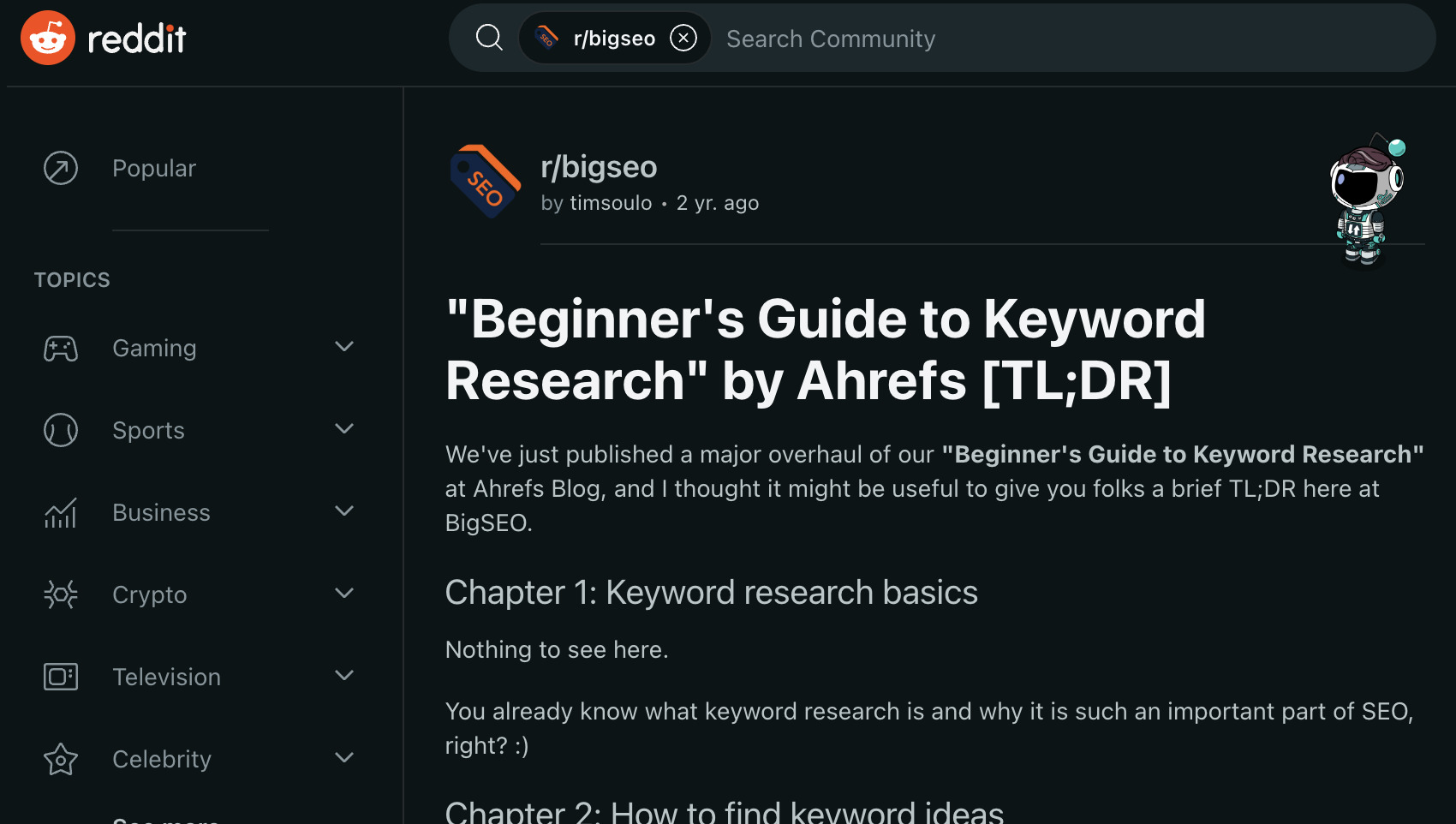
My colleague, Tim Soulo, didn’t write this Reddit post from scratch. It’s just a short version of the keyword research guide he already published as part of our beginner’s guide to SEO.
OK, that’s the basics out of the way… but where do you actually start?
Let’s go through this step by step.
1. Research your target audience
It’s impossible to distribute content effectively unless you first know the answers to these questions about your target audience:
- Where do they hang out and consume content online?
- Who do they trust in your industry?
- What types of content do they like to consume?
Let’s look at a few ways you can answer these questions.
a) Go with your gut
Let’s be real: If you work in a marketing leadership position, you should probably already have some idea how to answer these questions.
For example, many folks on our marketing team were Ahrefs customers before joining the company. Because of this, we know that people like us hang out and consume content on Twitter and Reddit:
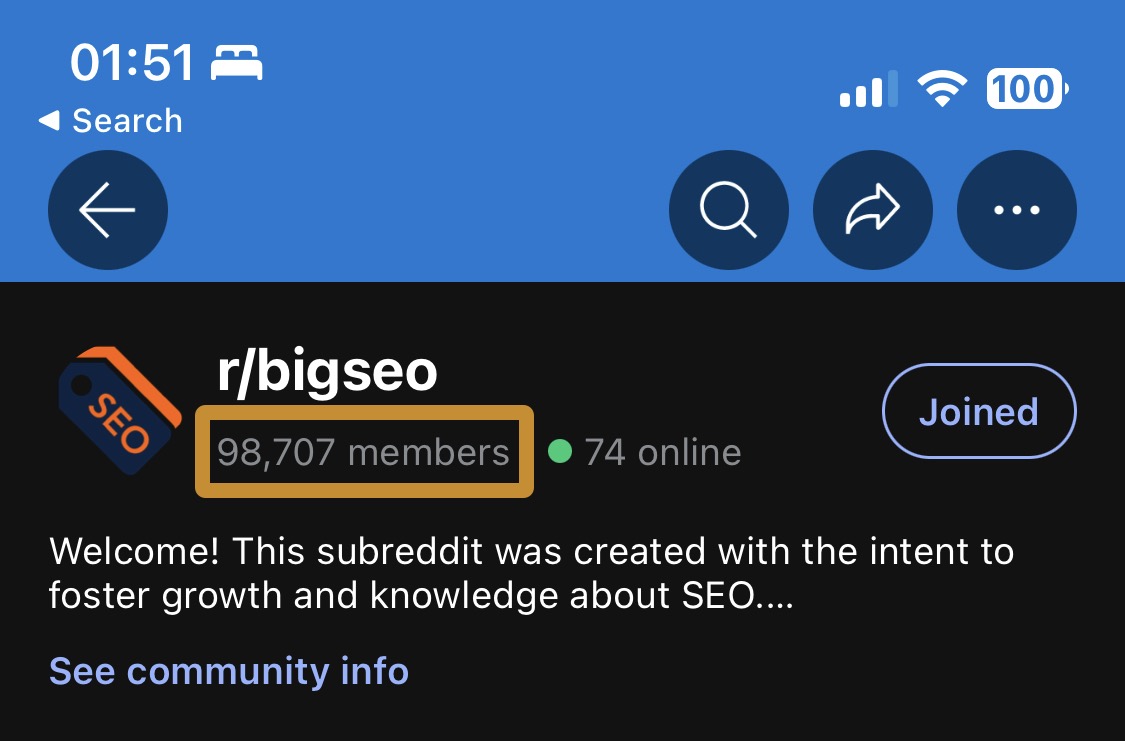
And also in private communities, like our very own Ahrefs Insider:

That said, I recommend relying on the collective opinion of your team instead of just yours. Otherwise, your biases may lead you to dumb conclusions…

b) Ask them
Despite being super obvious, few marketers seem to do this.
This is a shame, as there’s really no better source of information than the horse’s mouth. It’s also super quick and easy to do. Just create a quick survey with multiple-choice answers to the questions above and send it over to your existing audience (e.g., subscribers).
c) Research popular blogs
Most industries have a few popular blogs, and these are good seeds for audience research.
Here’s a quick way to find popular blogs in your industry:
- Go to Ahrefs’ Content Explorer
- Enter a few broad topics related to your niche separated by the “OR” operator
- Select “In title” from the dropdown and run the search
- Filter for websites with traffic <500K to exclude big brands
- Go to the Websites tab
For example, let’s say we sell BBQs and want to create and distribute content about that. If we search for “bbq OR grill,” we see websites in that niche sorted by their estimated monthly organic traffic.

Given that many of these websites get plenty of traffic, we can see right away that our audience is searching for answers on Google and consuming blog posts.
From here, we can also check the “Authors” tab to uncover prolific authors in the niche that our audience may like and trust:

It’s then just a case of digging a bit deeper to figure out where these bloggers are publishing and distributing content, and where they hang out online.
For example, let’s take Susie Bulloch, founder of heygrillhey.com.
If we click through to her Twitter profile from Content Explorer, we can see that she only has a few thousand followers and hasn’t tweeted since May 2022:

Given that she runs one of the biggest sites in the niche with an estimated 700K monthly search visits (according to Ahrefs), this is clearly not where she hangs out online or distributes content.
If we search Google, we see that she’s much more active on Instagram:

… Facebook:

… and TikTok (even though she hasn’t attracted a lot of followers there yet):

There’s also a fairly active Hey Grill Hey YouTube Channel with ~170K subscribers:

I also spotted that she runs a private community (“The Grill Squad”) on Facebook (which she sells access to via her website)…

… as well as a free newsletter:

I repeated this process for a few niche blogs and authors and found that it’s a similar story for them all. They’re mostly distributing content to visual platforms like Instagram, TikTok, and YouTube.
2. Distribute your content using the “pull” strategy
Publishing content in any format takes a lot of time and effort, so it makes sense to drive as many eyeballs as possible there. This is where the “pull” distribution strategy comes in.
Here’s a quick reminder of how it works:

For example, we try to “pull” our 136K Twitter followers to our blog posts:
And our 102K Facebook followers:

And our (now) 141K LinkedIn followers:

And our 200K+ newsletter subscribers:

We also distribute our content via organic search using SEO.
In fact, this is the bread and butter of our content distribution strategy because, unlike many other channels, traffic from organic search is passive and consistent.
For example, here’s the estimated organic traffic to our affiliate marketing guide over the years:

Although there are some fluctuations, you can see that the page has been attracting between ~16K and ~60K monthly search visits since we published it almost three years ago.
3. Distribute your content using the “push” strategy
Not everyone is going to want to consume your content in its original format—especially if it’s published somewhere they don’t usually hang out online, like your blog.
This is where the “push” distribution strategy comes in.
Here’s a reminder how this works:
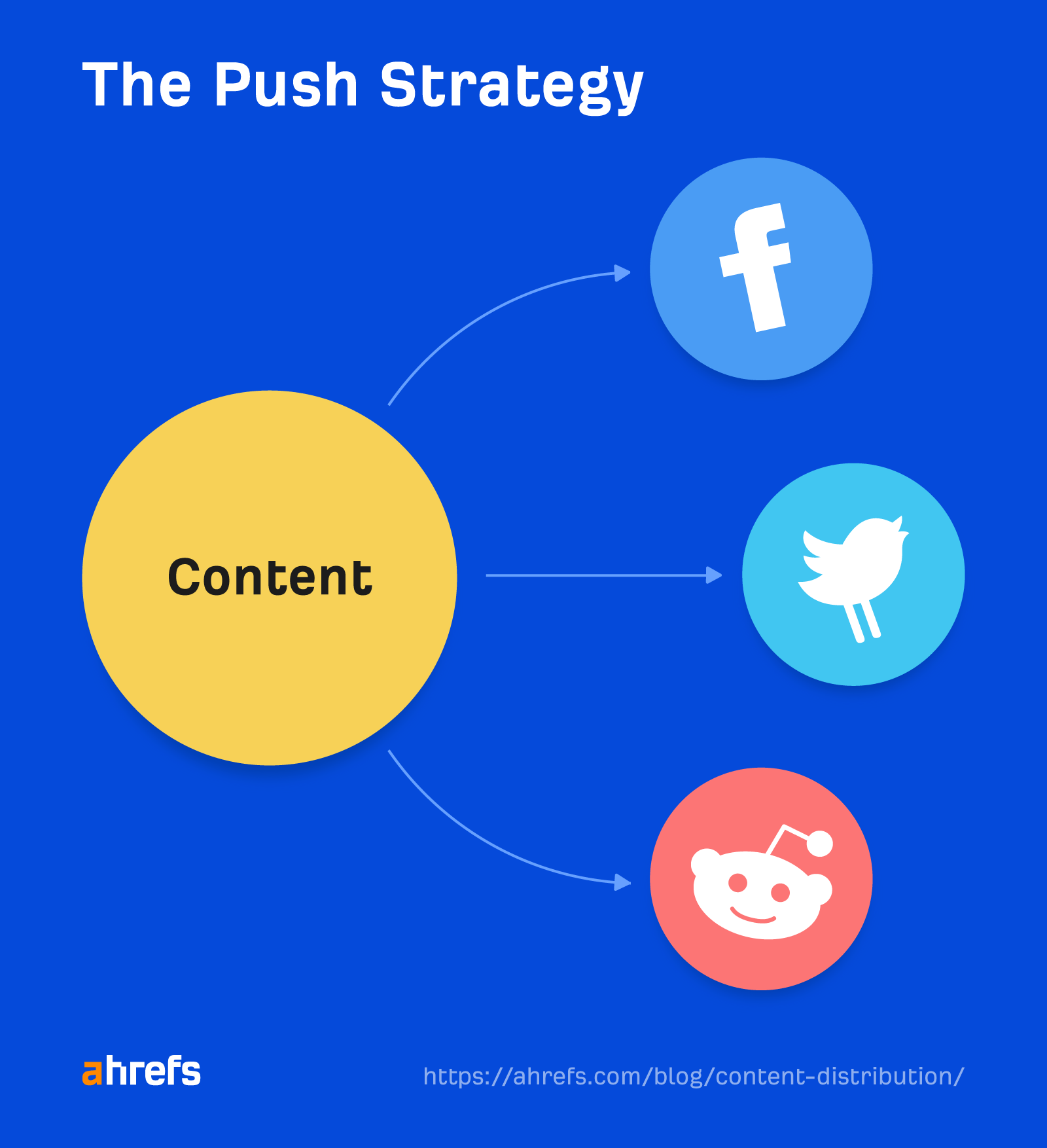
Instead of trying to pull people away from the platforms they’re already using, you repurpose and republish your content in a native format to get it in front of more people.
Let’s look at a few ways to do this.
Twitter threads
This is where you publish a “too long didn’t read” version of your content as a series of tweets.
Here’s one I did about keyword cannibalization in 2021:
This was quick to write and publish because it was just a condensed version of my guide to keyword cannibalization.
Reddit posts
Here’s an example from Tim:
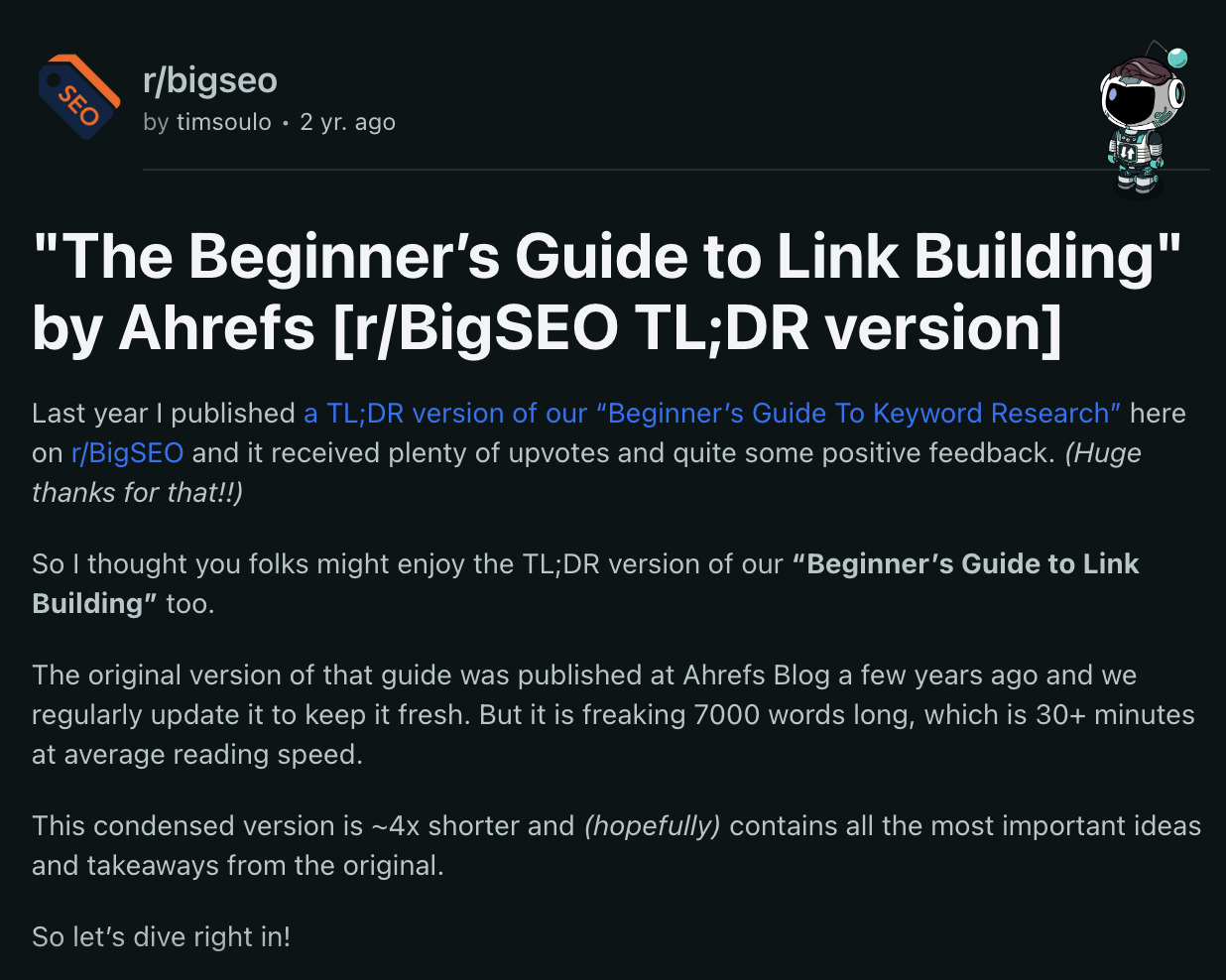
He published this on the /r/bigSEO subreddit. As it’s basically just a condensed version of his beginner’s guide to link building, it didn’t take him long to write.
Facebook groups
Before joining Ahrefs, I made a video about how to find guest post opportunities.
I’m not going to share it here because it’s embarrassingly bad, but I published it natively on Facebook in my group. I then asked the owners of SEO Facebook groups whether I could post it in their groups. Most agreed.
Here’s one of those posts:
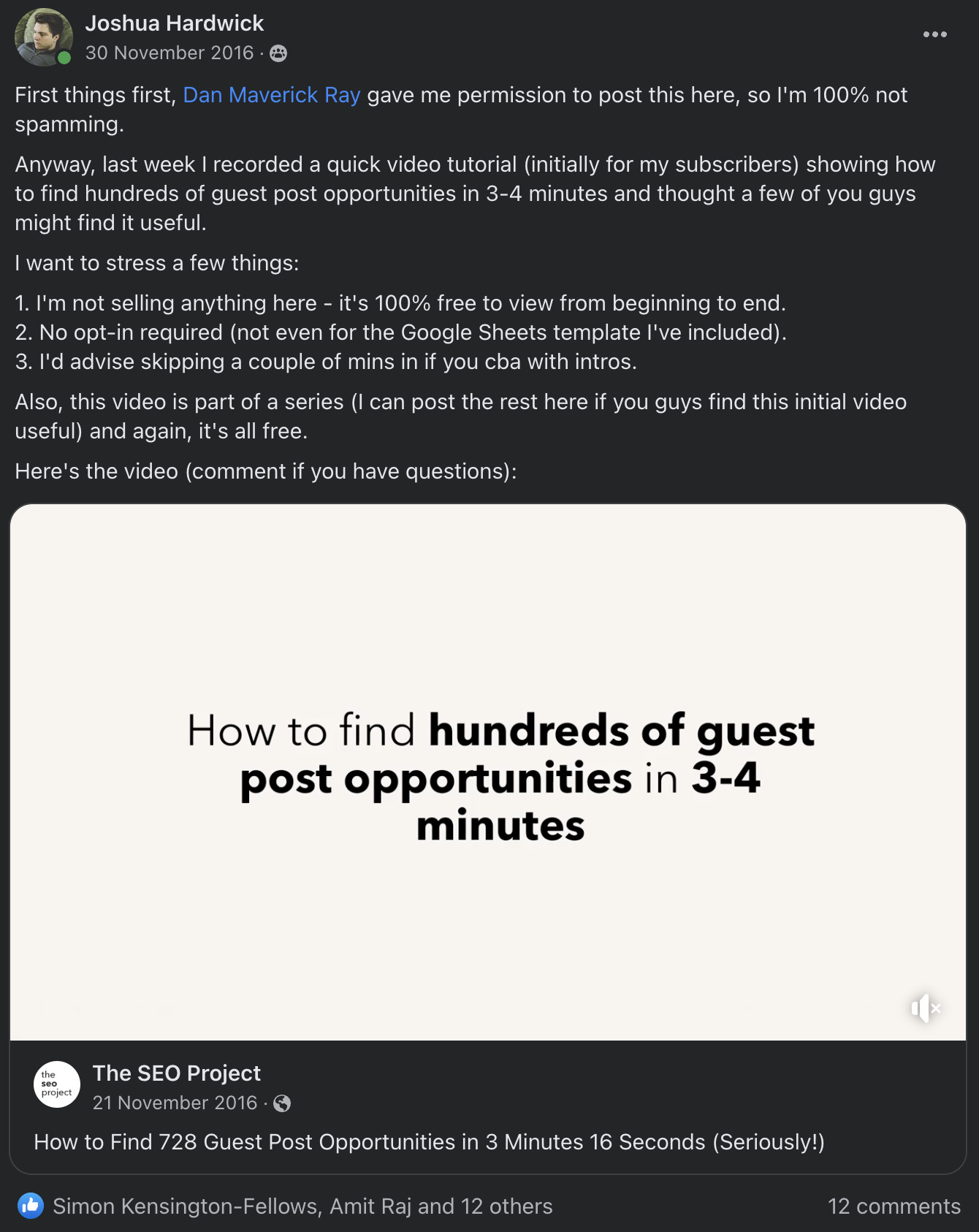
As you can see, I managed to drive quite a few views by doing this:
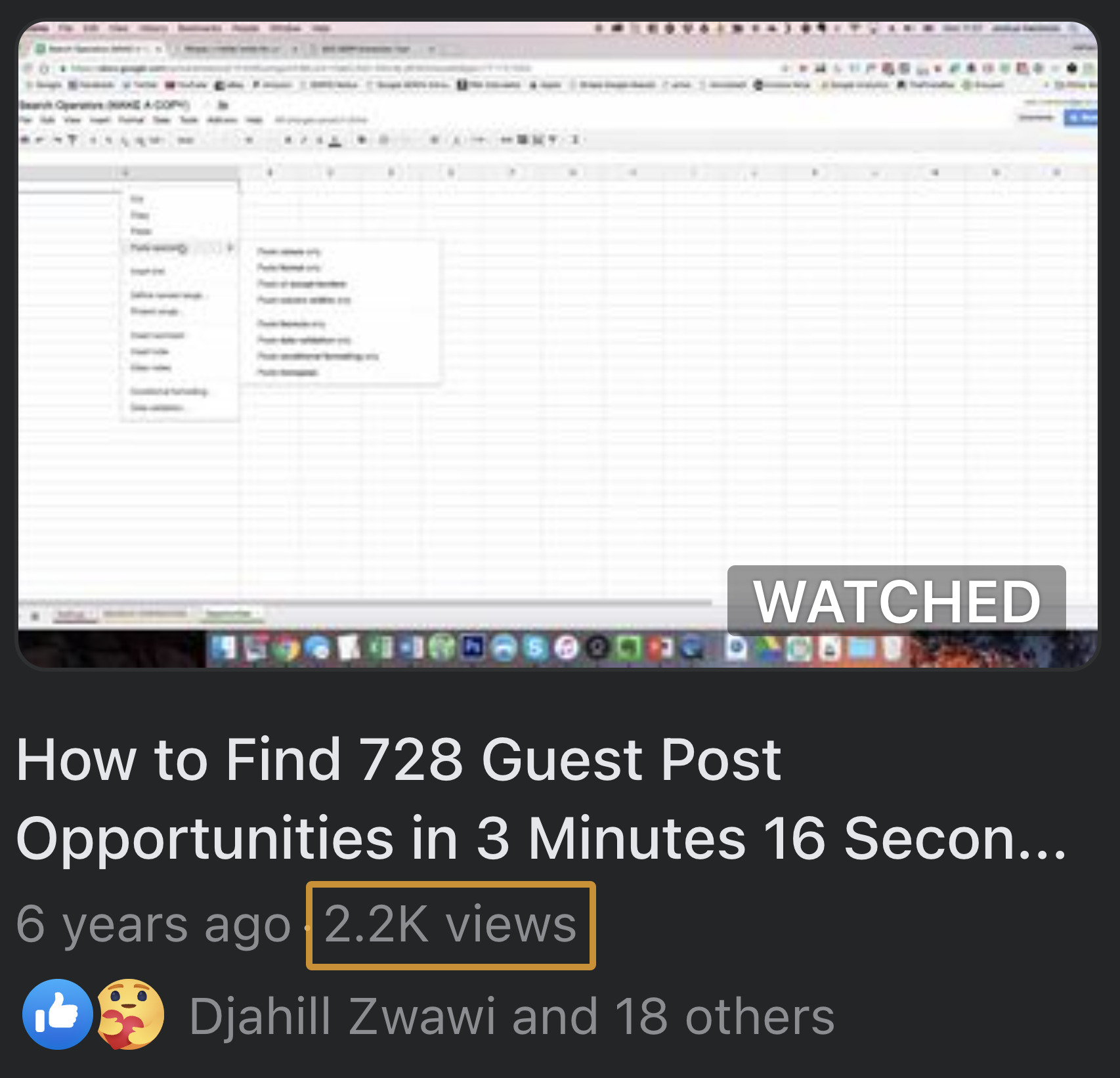
Guest posts
Guest blogging is where you write a post for another blog in your industry. It’s a great way to distribute content, especially if you can get published on a site with a large audience.
Example: Back in the day, I wrote a post about video SEO for Kissmetrics:

This was a super popular blog at the time, so it got my thoughts and ideas in front of many people.
But how do you find websites to write guest posts for?
There are many ways, but one of the simplest is to pitch sites that have already published content about similar topics.
Here’s how to find them:
- Go to Ahrefs’ Content Explorer
- Enter a similar topic to the one you want to write about
- Change the dropdown to “In title”
- Go to the Websites tab
For example, if we wanted to distribute content about link building, we could look for sites that have published posts about keyword research. They’re likely to be receptive to a pitch for a post about a closely related topic.

4. Distribute content using paid channels
Paid channels can be used to “pull” people toward content on another platform or to get more eyeballs on native content (“push” strategy). It depends on the channel and what you’re trying to achieve.
For example, on Twitter, you can promote tweets that link to content on another platform…
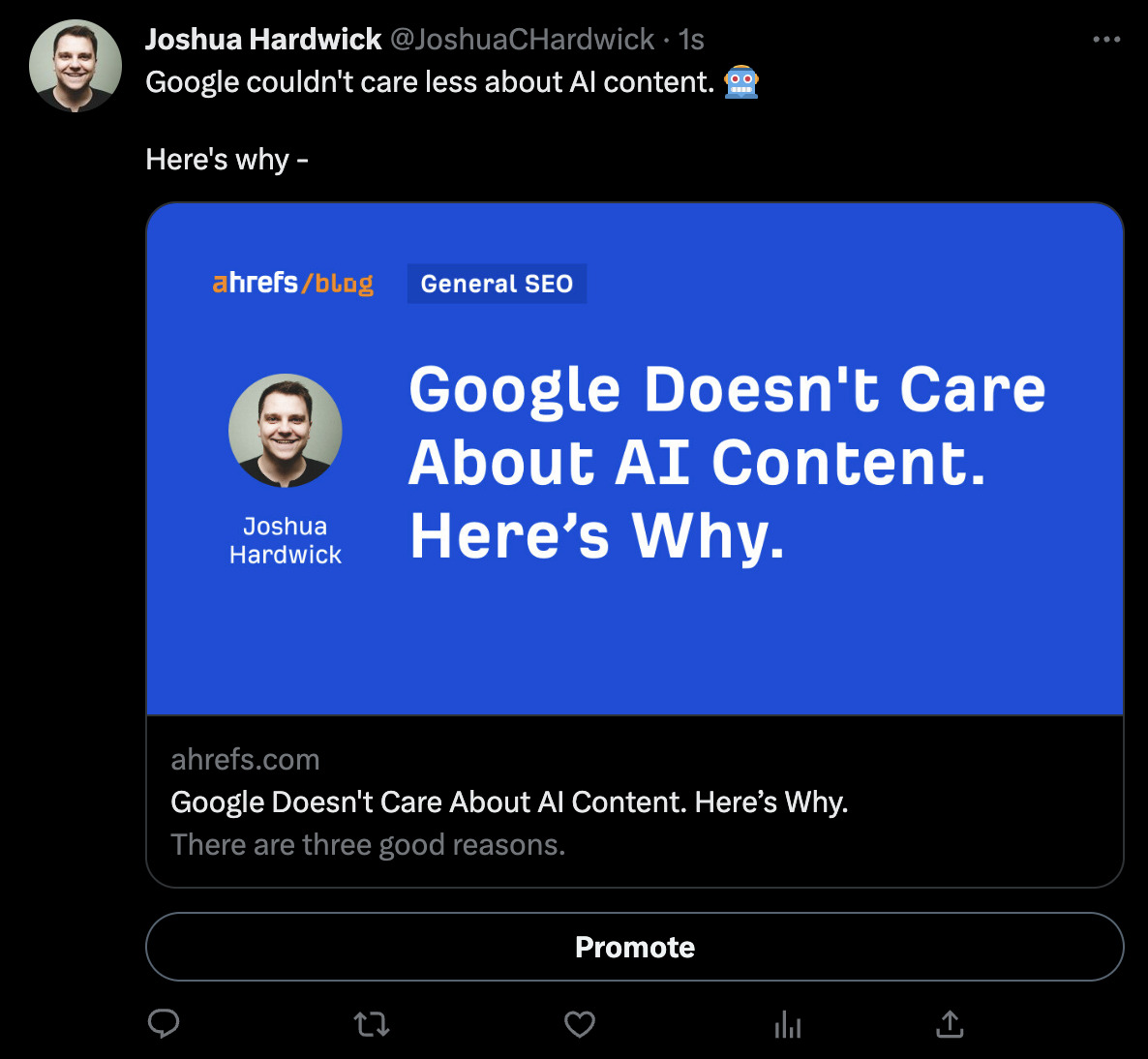
… or tweets with native content, like this thread:

(I’m guessing Elon Musk doesn’t really care which you choose as long as you’re giving him $$$.)
Here are a few more paid channels worth considering:
Google search ads
Google ads appear above organic search results. You just choose your keywords, decide how much you’re willing to pay for a click, and that’s it.
For example, we distributed our free SEO tools this way in 2022:

Because you choose which keywords to bid on, Google Ads is a great way to reach people who are actually searching for your content.
See which keywords your competitors are running ads for. To do this, plug a competitor into Ahrefs’ Site Explorer and go to the Paid keywords report.

Podcasts and newsletters
You might have seen us sponsoring a fair few of these.
In fact, in December 2021, we decided to move our entire paid advertising budget away from big players like Facebook and Google and, instead, use it to sponsor influential industry podcasts and newsletters.
Learn more about our results in this thread:
Native advertising
Native ads are advertisements that look like regular content and appear on popular websites, e.g., USA Today, AOL, MSN, Weather.com, etc.
Taboola and Outbrain are popular marketplaces for native ads.
This coffee company converted 10K new customers in six months using native ads.
Facebook ads
Facebook allows you to boost your posts to more users on its platform. Just click the big “Boost post” button to do this.

Given that the purpose of content distribution is to reach more people, it’s important to measure performance to see which channels and strategies are most effective at doing that.
Below are a few tools that can help.
- Ahrefs Webmaster Tools – Track your content’s performance in organic search.
- Ahrefs Web Analytics – See where you’re getting traffic from.
- Twitter Analytics – Get insights into how your tweets are performing.
- Meta Business Suite – Get insights into how your Facebook posts are performing.
- LinkedIn Analytics – Get insights into how your LinkedIn posts are performing.
What next?
Distribution is only one part of a successful content marketing strategy. Check out my favorite content marketing tools to help with everything from planning, to writing, to distribution.


